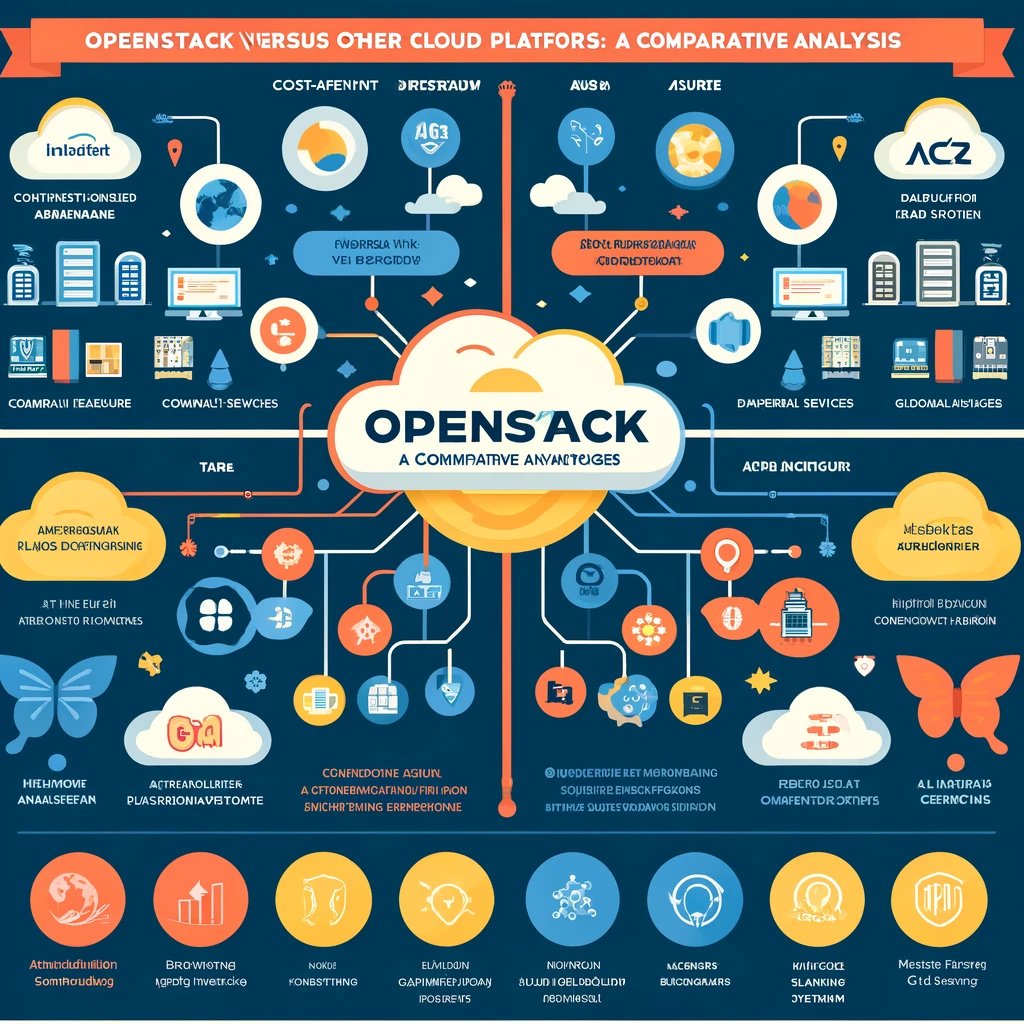Table of Contents
OpenStack vs Other Cloud Platforms – A Comparative Analysis
The landscape of cloud computing has significantly evolved over the past decade, with numerous platforms vying for dominance. Among these, OpenStack presents itself as a unique contender, offering an open-source alternative to proprietary services like AWS, Azure, and Google Cloud Platform (GCP). This comparative analysis delves into the strengths and distinctions between OpenStack and its proprietary counterparts, shedding light on the strategic advantages and considerations of each platform.

OpenStack: The Open-Source Cloud
OpenStack is an open-source cloud computing platform that enables businesses to run and manage large networks of virtual machines. It’s a collection of software tools for building and managing cloud computing platforms for public and private clouds. OpenStack is known for its flexibility, as it supports both virtual machines and bare metal computing.
Key Advantages:
Cost-Effectiveness: With no licensing fees, OpenStack can be a more affordable option for businesses looking to deploy their own cloud infrastructure.
Flexibility and Openness: Being open-source, it offers unparalleled flexibility in terms of customization and integration with existing systems.
Community Support: A robust community contributes to its development, ensuring continuous innovation and support.
AWS: The Market Leader
Amazon Web Services (AWS) is a subsidiary of Amazon providing on-demand cloud computing platforms and APIs to individuals, companies, and governments. AWS offers an extensive set of cloud services, including computing power, storage options, and networking capabilities, making it a one-stop-shop for cloud computing needs.
Key Advantages:
Comprehensive Services: AWS offers a vast array of services, covering virtually every cloud service category, from computing and storage to machine learning and analytics.
Global Infrastructure: AWS’s global presence with its data centers ensures high availability and low latency for applications and services worldwide.
Market Leadership: Being the first and most mature cloud provider, AWS offers reliability and a broad ecosystem of partners and integrations.
Azure: Microsoft’s Cloud
Microsoft Azure is a cloud computing service created by Microsoft for building, testing, deploying, and managing applications and services through Microsoft-managed data centers. It supports various programming languages, tools, and frameworks, including both Microsoft-specific and third-party software and systems.
Key Advantages:
Integration with Microsoft Products: Azure offers seamless integration with Microsoft’s software products, making it an attractive choice for enterprises relying on Microsoft ecosystems.
Hybrid Cloud Capabilities: Azure excels in hybrid cloud solutions, allowing businesses to integrate on-premises data centers with cloud resources.
Developer Tools and Services: Azure provides a wide range of tools and services that cater to developers, including AI, machine learning, and Internet of Things (IoT) services.
Google Cloud Platform: The Innovator’s Choice
Google Cloud Platform (GCP) is a suite of cloud computing services that runs on the same infrastructure that Google uses internally for its end-user products, such as Google Search, Gmail, file storage, and YouTube. GCP is known for its high-performance computing, big data, and analytics capabilities.
Key Advantages:
Data and Analytics: GCP provides powerful data and analytics tools, with BigQuery being a standout offering for managing big data.
Machine Learning and AI: GCP leads in machine learning and AI services, benefiting from Google’s pioneering work in these areas.
Network Infrastructure: Google’s cutting-edge network infrastructure offers fast and reliable connections worldwide.
Comparative Analysis: Considerations for Choosing a Cloud Platform
Cost: OpenStack can be more cost-effective for deploying private clouds, while AWS, Azure, and GCP offer a pay-as-you-go model for public cloud services.
Flexibility and Openness: OpenStack provides more flexibility for customization. In contrast, AWS, Azure, and GCP offer less flexibility but compensate with a broad range of out-of-the-box services and solutions.
Integration and Ecosystem: Azure integrates seamlessly with Microsoft products. AWS and GCP offer extensive integrations with various third-party tools and services.
Innovation and Community: GCP is often at the forefront of innovation, particularly in AI and machine learning. OpenStack benefits from community-driven innovation, continually adapting and evolving.
Conclusion
Choosing the right cloud platform depends on specific business needs, existing infrastructure, and strategic goals. OpenStack offers a flexible, cost-effective solution for private clouds with strong community support. In contrast, AWS, Azure, and GCP provide comprehensive, ready-to-use public cloud services with global infrastructure and a wide array of tools and integrations. Each platform has its unique strengths and trade-offs, making it crucial for businesses to thoroughly evaluate their options to align with their cloud computing strategies.
Blog Home
